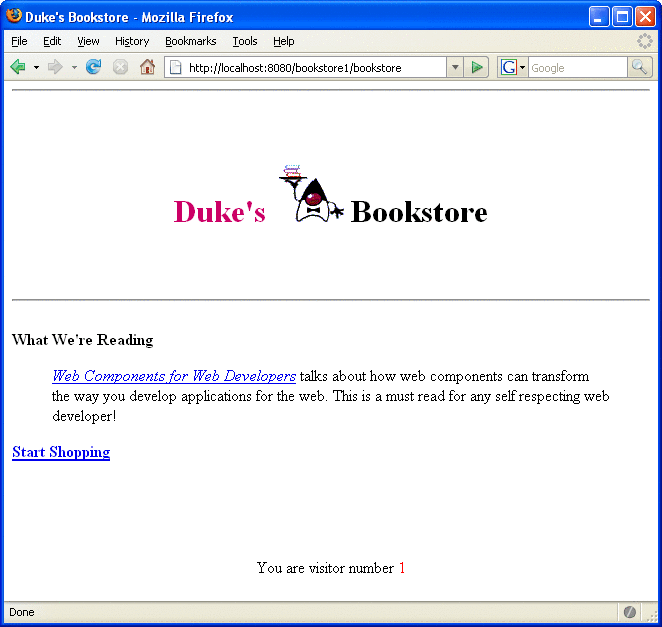Programming Customized Requests and Responses
There are many ways for a filter to modify a request or response. For example, a filter can add an attribute to the request or can insert data in the response. In the Duke’s Bookstore example, HitCounterFilter inserts the value of the counter into the response.
A filter that modifies a response must usually capture the response before it is returned to the client. To do this, you pass a stand-in stream to the servlet that generates the response. The stand-in stream prevents the servlet from closing the original response stream when it completes and allows the filter to modify the servlet’s response.
To pass this stand-in stream to the servlet, the filter creates a response wrapper that overrides the getWriter or getOutputStream method to return this stand-in stream. The wrapper is passed to the doFilter method of the filter chain. Wrapper methods default to calling through to the wrapped request or response object. This approach follows the well-known Wrapper or Decorator pattern described in Design Patterns, Elements of Reusable Object-Oriented Software, by Erich Gamma et al. (Addison-Wesley, 1995). The following sections describe how the hit counter filter described earlier and other types of filters use wrappers.
To override request methods, you wrap the request in an object that extends ServletRequestWrapper or HttpServletRequestWrapper. To override response methods, you wrap the response in an object that extends ServletResponseWrapper or HttpServletResponseWrapper.
HitCounterFilter wraps the response in a tut-install/javaeetutorial5/examples/web/bookstore1/src/java/com/sun/bookstore1/filters/CharResponseWrapper. The wrapped response is passed to the next object in the filter chain, which is BookStoreServlet. Then BookStoreServlet writes its response into the stream created by CharResponseWrapper. When chain.doFilter returns, HitCounterFilter retrieves the servlet’s response from PrintWriter and writes it to a buffer. The filter inserts the value of the counter into the buffer, resets the content length header of the response, and then writes the contents of the buffer to the response stream.
PrintWriter out = response.getWriter();
CharResponseWrapper wrapper = new CharResponseWrapper(
(HttpServletResponse)response);
chain.doFilter(request, wrapper);
CharArrayWriter caw = new CharArrayWriter();
caw.write(wrapper.toString().substring(0,
wrapper.toString().indexOf("</body>")-1));
caw.write("<p>\n<center>" +
messages.getString("Visitor") + "<font color=’red’>" +
counter.getCounter() + "</font></center>");
caw.write("\n</body></html>");
response.setContentLength(caw.toString().getBytes().length);
out.write(caw.toString());
out.close();
public class CharResponseWrapper extends
HttpServletResponseWrapper {
private CharArrayWriter output;
public String toString() {
return output.toString();
}
public CharResponseWrapper(HttpServletResponse response){
super(response);
output = new CharArrayWriter();
}
public PrintWriter getWriter(){
return new PrintWriter(output);
}
}
Figure 4–3 shows the entry page for Duke’s Bookstore with the hit counter.
Figure 4–3 Duke’s Bookstore with Hit Counter

- © 2010, Oracle Corporation and/or its affiliates
